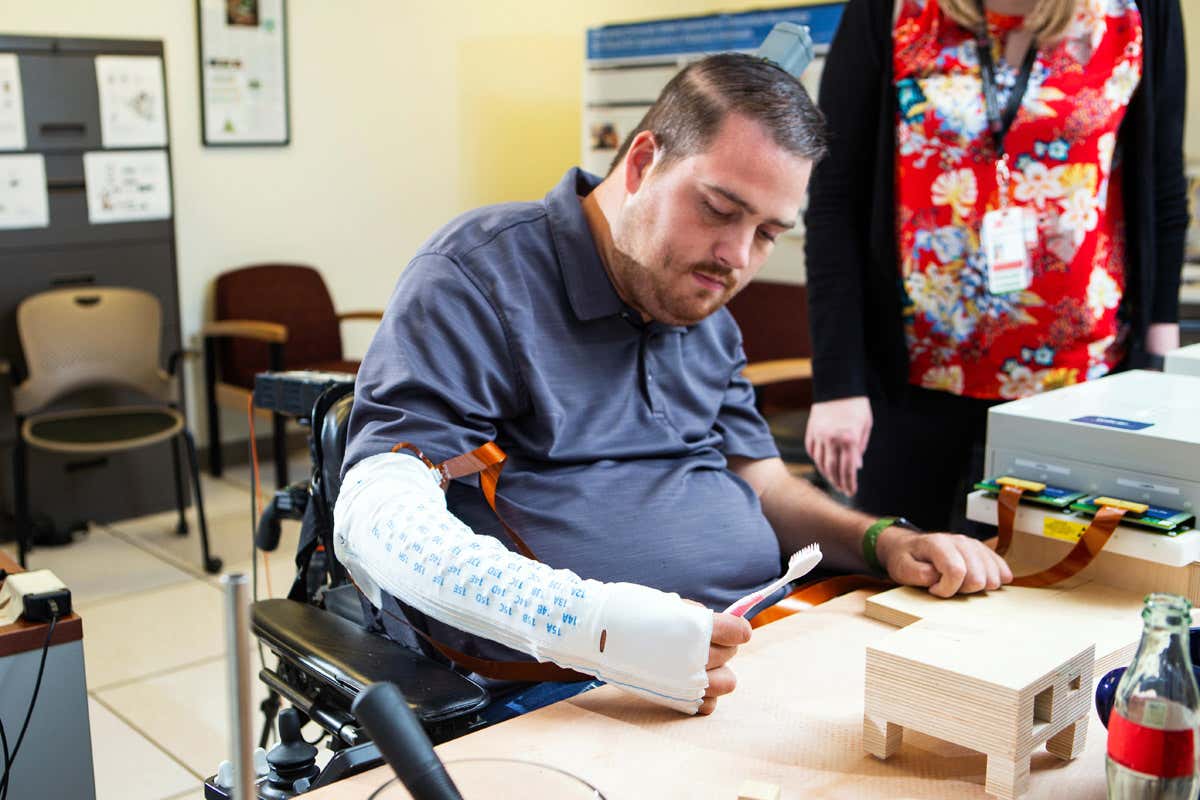According to a press release, for first time both motor function and sense of touch have been restored using a brain-computer interface (BCI).
A college student, Ian Burkhart suffered a spinal cord injury (SCI) while swimming in the ocean off the coast of North Carolina. He met with an accident that left him unable to move most of his body.
Four years later, he enrolled in an experimental program called NeuroLife. Burkhart had a BCI developed by researchers at Battelle, a private nonprofit specializing in medical tech. Researchers implanted a computer chip in his brain. Goal behind this insertion was to improve the range of motion in his arms and to artificially recreate his sense of touch.
A severe spinal injury impedes the electrical signals going from Burkhart’s brain to his hands through the spinal cord. His injury resulted in a complete disconnect between his brain and his arms and legs. Researchers figured out that few wisps of his spinal fiber survive.
They discovered very weak electrical signals corresponding to touch and motion are still traveling to and from his brain. But they are too weak for him to consciously notice.
Researchers at Battelle bypass the spinal cord and reconnect the brain and body. Researchers used an elaborate setup that connects Burkhart’s brain to a computer. Port in his skull sends signals to a computer. There, a software program decodes the signals.
Lead researcher Patrick Ganzer, said, “We’re separating thoughts that are occurring almost simultaneously and are related to movements and sub-perceptual touch, which is a big challenge,”
Burkhart said, “It’s definitely strange,”
“It’s still not normal, but it’s definitely much better than not having any sensory information going back to my body.”







